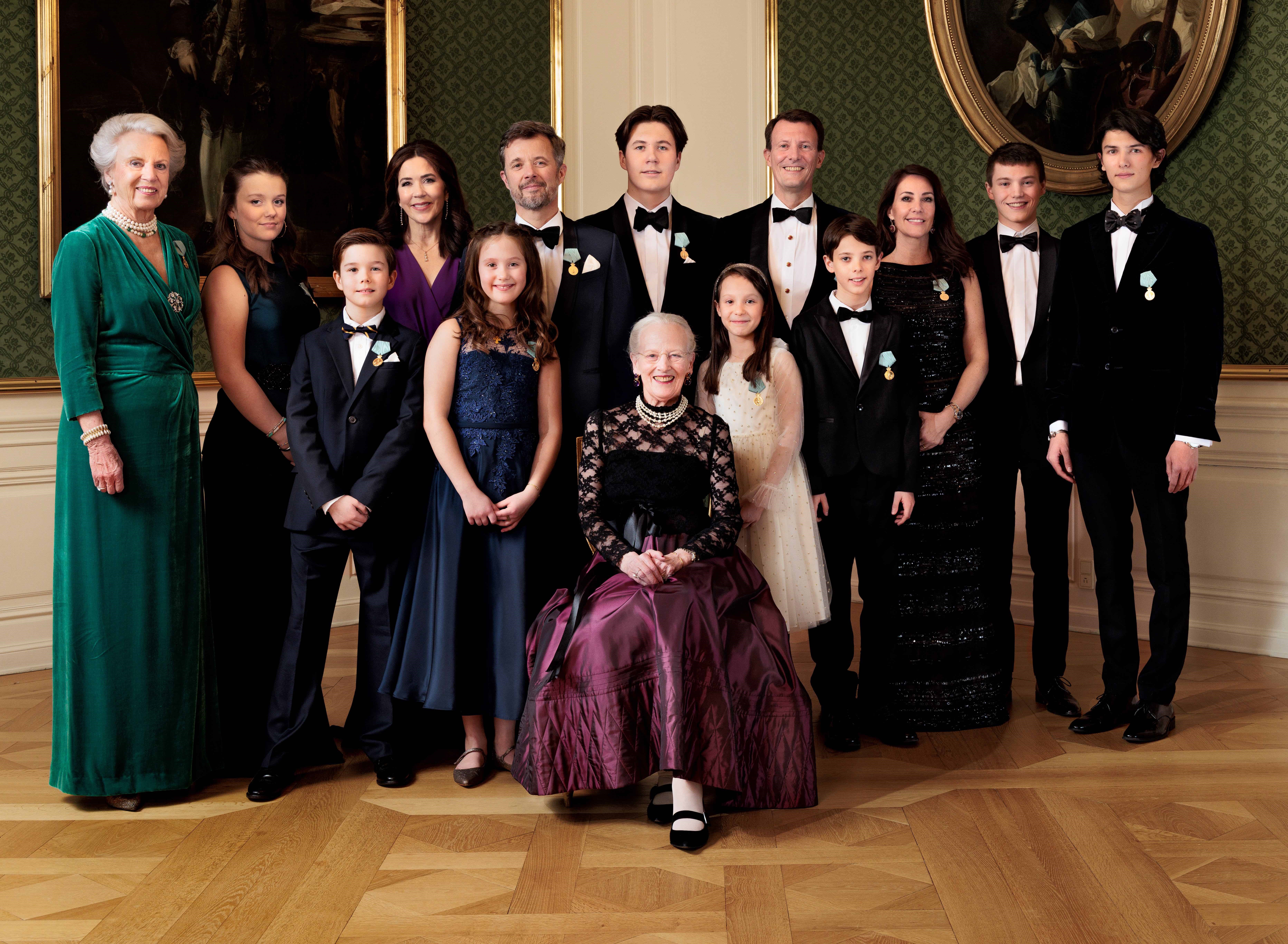To mark Queen Margrethe II’s Golden Jubilee, the Royal House of Denmark and Wonderful Copenhagen commissioned Kontrapunkt to design a new logo that reflects and celebrates the monarch’s eclectic life. Reports from Elettra Scrivo
Colourful, flamboyant, glamorous, dazzling, stylish. These are not the first words that come to mind when you think of a queen. Margrethe II, Queen of Denmark, however, fits this description well. There are few people as eclectic as the queen of Europe’s oldest monarchy. Once described as an “unsung style heroine” by Vogue, Margrethe II’s identity extends far beyond that of the monarchy.
Before becoming Denmark’s first female ruler since 1412, Margrethe II designed illustrations for the 1977 Danish edition of The Lord of the Rings under the pseudonym Ingahild Grathmer. Since becoming queen, she has fulfilled her royal duties in addition to being a professional artist, illustrator, production designer, and costume and set designer.
To celebrate its Golden Jubilee, the Royal House of Denmark wanted a visual style that would encapsulate the character of its unique leader. Bo Linnemann, founding partner of brand design agency Kontrapunkt, was inspired by the personality of Queen Margrethe II to develop the first Golden Jubilee digital logo. The new wordmark, indeed, designed to celebrate the 50th anniversary of the Queen’s accession to the throne in January, was to combine the Queen’s status with her artistic nature.
“When I was first commissioned to develop the logo, I couldn’t help but consider the language the Queen uses in her own work, which is very lively and organic. She’s not a typical Danish artist who inherits minimalism. She is expressive in everything she does,” says Linnemann.
The Queen’s ornate style doesn’t stop at her artwork. She resides at Amalienborg Palace, one of the most striking examples of Rococo architecture in Copenhagen, and spends her spring and autumn holidays at Fredensborg Palace, built in the Dutch Baroque style.
The Rococo style was an excellent source of inspiration for the design of certain elements of the Jubilee logo, says Linnemann. The bespoke typography, for example, was inspired by the acanthus leaf, an ancient Greek architectural design element first used in Corinthian columns, and other Rococo details found in both palaces. The outline of the leaf is clearly visible on the stems of the letter M, which together with the crown forms the core of the logo.
“She is a bit abstract in the way she creates her art and conducts her work, and I hope that is reflected in the logo. The visual identity, including the number 50 in the center of the logo, aims to reflect the modernity of the queen and to tap into her creativity”
“For me, the whole project started with the idea of creating bespoke typography for the Queen. The font was designed with the shapes and forms of the Queen’s work in mind,” says Linnemann. Every detail, from the typography to the color palette, was also designed to be an ode to the queen and her artistic side. The typeface appears to have been painted in even brush strokes, reflecting the heritage of the crown. However, its use in digital applications has ensured its contemporaneity and readability. The color palette is made up of the four colors – blue, hot pink, orange and green – which the Queen uses most in her artwork and personal style. Although monochromatic, the palette allows for flexibility, as colors can be alternated to create different logos, each with their own festive appeal.
The rich color palette not only reflects the queen’s artistry, but also her modernity and progressiveness. The bright colors, most of them slightly flashy, almost have a pop-art feel and would not be associated with an 81-year-old monarch at first glance. However, the Queen of Denmark, whom Linnemann describes as an “extremely remarkable person”, stands out from other monarchs because she is first and foremost an artist. “She is a bit abstract in the way she creates her art and conducts her work, and I hope that is reflected in the logo. The visual identity, including the number 50 in the center of the logo, aims to reflect the queen’s modernity and tapping into her creativity,” says Linnemann.
Christian V’s crown, located at the very top of the logo like a “cherry on a cake”, has also been redesigned to fit in with the modern logo. Originally dating from 1671, the crown has been refreshed to appear more contemporary, transparent and readable. “All the elements of the logo are harmonized. The Royal Crown was created to fit the character design and lettering, so it is bespoke and personalized for the Queen,” adds Linnemann.

Given its flexible size, the new wreath can be used in everything from small fixed and large flags to digital platforms, making it suitable for the modern age. The logo as a whole was developed to be digital first, with an animated version complementing the static version. It eliminates the restrictive guidelines typical of these projects and is free to use, allowing anyone to download it for use in stores, TV shows or magazines.
“There are only three different formats and versions of the Golden Jubilee logo. We did this on purpose because people should use it in whatever way they see fit for their needs. ‘bulletproof in the way it was thought out,’ says Linnemann.